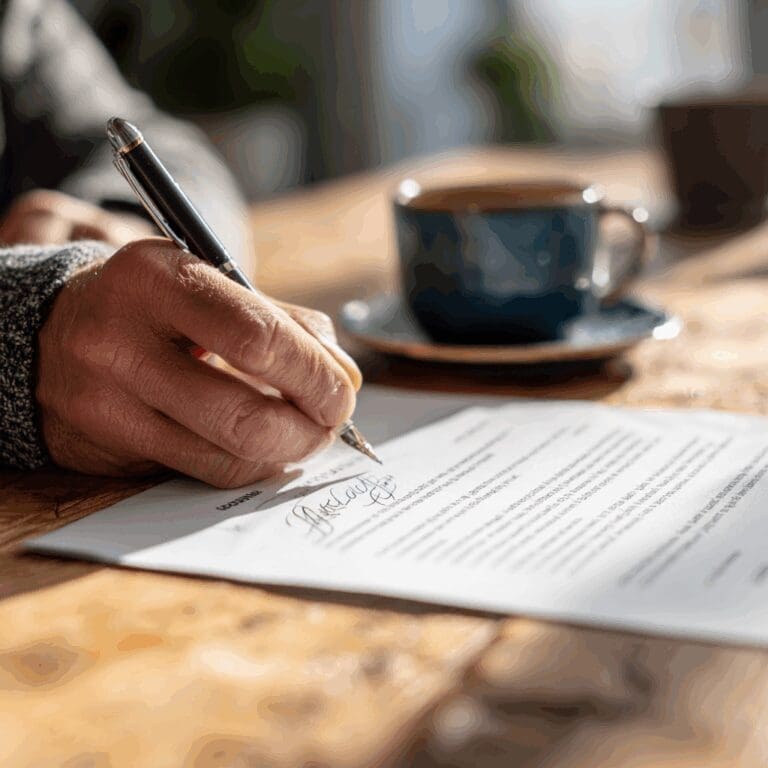
Buying your first home is an exciting milestone, but understanding how the mortgage approval process works can help reduce uncertainty along the way. Many first-time home buyers in British Columbia—particularly across communities like Abbotsford, Chilliwack, and Mission—aren’t sure what happens between getting a mortgage pre-approval and receiving the keys to their home. Knowing what to expect at each stage can help you plan with confidence and avoid delays.
This guide walks through the mortgage approval timeline step-by-step, highlighting what happens, how long each phase typically takes, and what documents or decisions are required along the way.
Mortgage brokers can often submit your application to multiple lenders at once, helping you compare rates and terms without affecting your credit multiple times.
Mortgage pre-approval is the first key step. This confirms how much you may qualify to borrow based on your income, debt, credit score, and down payment. It’s not a final commitment, but it gives you a reliable price range and strengthens your position when making an offer on a home.
Lenders typically require proof of income, such as pay stubs or tax returns, as well as bank statements to verify your down payment. Additionally, they may request a government-issued ID and permission to check your credit. These documents allow lenders to assess eligibility and estimate monthly payments.
Pre-approval helps set a realistic home search range, supports a stronger offer, and gives real estate agents the guidance they need to focus your search efficiently.
With pre-approval in hand, you’ll start searching for homes within your price range. The length of this phase depends on your personal criteria, availability in your desired area, and how competitive the market is at the time.
When you find a home that suits your needs, you’ll work with your real estate agent to write an offer. Most offers include a deposit, proposed possession date, and subject conditions. These conditions may include financing approval, a home inspection, or a review of property documents.
In British Columbia, a deposit—often around five percent—is typically submitted once an offer is accepted. If subjects aren’t removed, the offer becomes void, and the deposit is usually returned. However, removing subjects without final financing approval could risk losing the deposit if the purchase can’t be completed.
After your offer is accepted, your mortgage broker submits a full mortgage application to the lender. The lender will now assess both your financial situation and the property itself.
A new review of your income, employment, credit history, and debt obligations will take place. The lender may request updated documents to confirm that nothing has changed since your pre-approval.
At this stage, the lender also evaluates the property to ensure it meets their guidelines. If necessary, an appraisal may be ordered to confirm the market value. Conditional approval is issued once the lender is satisfied with the review, but still requires specific items to be finalized.
These conditions might include updated income verification, proof of home insurance, or additional clarification for any recent large deposits. Self-employed applicants may need to provide business financial statements or recent Notices of Assessment from the CRA.
Avoid changing jobs, taking on new debt, or making large purchases during this period, as it could impact your approval status.
Once you receive conditional approval, the next step is to satisfy the outstanding requirements listed by the lender. This involves submitting any missing documents and completing the final compliance checks.
Examples of conditions include confirming employment, providing a void cheque for automatic payments, and securing property insurance. In some cases, lenders may ask for written explanations regarding account activity or proof of gifted funds.
After the lender is satisfied with the documentation, final approval is granted. This confirms that the mortgage is ready to be funded on closing day. Timely submission of documents during this step helps avoid any last-minute delays.
The appraisal and legal review often occur at the same time. If the lender requires an appraisal, it is completed to verify that the property’s market value supports the purchase price. A low appraisal may result in a smaller loan amount being approved, which could mean increasing your down payment or renegotiating the purchase price.
While this is happening, your lawyer or notary prepares all the legal documentation required to complete the sale. This includes reviewing the title, ensuring there are no liens, calculating adjustments for taxes or fees, and confirming that the property transfer complies with legal and lender requirements.
The legal professional also prepares the documents related to your mortgage and works closely with the lender to ensure everything is aligned for closing.

At this point, the lender sends a formal package of mortgage instructions to your lawyer or notary. These documents outline your loan terms, payment structure, and any final requirements.
You’ll be contacted to schedule a signing appointment. This is when you sign the final mortgage documents, provide proof of home insurance as required by the lender, and deliver your remaining down payment and closing costs using certified funds.
The signing appointment usually takes about 30 to 60 minutes. You’ll need to bring valid government-issued identification, your banking information, and proof of home insurance. It’s important to have certified funds prepared in advance, as personal cheques are not accepted.
Closing costs can vary, but typically include legal fees, property transfer tax, title insurance, and potential disbursements. If you used the First-Time Home Buyer’s Program in BC, your property transfer tax may be reduced or exempted.
Possession day is when everything becomes official. Your lawyer transfers the funds to the seller’s lawyer, the property title is updated with your name, and the home becomes legally yours.
Once the lawyer confirms the transaction is complete, your REALTOR® gives you the keys, and you can begin moving in.
It’s a good idea to plan your move for the late afternoon or early evening, as key release can happen later in the day, depending on how quickly banks and legal offices process the paperwork.
Ensure utilities are set up in advance, and double-check your mortgage documents when your first statement arrives to confirm payment details and due dates. Most buyers also arrange for home insurance to begin on possession day, or slightly before, to ensure continuous coverage.
The mortgage approval timeline involves several key stages—each requiring timely communication, document preparation, and the coordination of multiple professionals. For first-time buyers, understanding how each step connects to the next can reduce stress and increase confidence throughout the purchase process.
A proactive approach—such as organizing documents early, responding promptly to requests, and working with experienced professionals—can help ensure your home purchase proceeds smoothly and on schedule.
Mortgage approval usually takes between three and ten business days once the complete application is submitted and the required documents have been provided. The timeline can vary depending on the lender and the complexity of the file.
Pre-approval provides an estimate of your borrowing capacity based on a preliminary review of your financial details. Full approval occurs after you’ve made an offer on a home and includes a detailed assessment of both your finances and the property.
Yes, but it’s generally not recommended. A pre-approval strengthens your offer and ensures you’re looking at properties within your budget. Without one, you risk delays or financial surprises during the approval stage.
Your exact mortgage rate is confirmed once the lender issues a formal mortgage commitment. While some lenders provide rate holds during the pre-approval stage, the final rate depends on the product chosen and market conditions at the time of approval.
Commonly required documents include recent pay stubs, the latest T4 or Notice of Assessment, bank statements showing your down payment, valid government-issued identification, and proof of additional income if applicable.